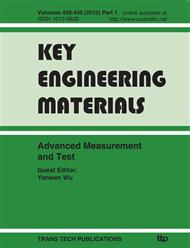p.1
p.6
p.12
p.17
p.23
p.29
p.35
Noise Reduction of ECG Signal Based on Morphological Filtering and WT
Abstract:
In order to eliminate the noise in ECG signal and increase the diagnosis efficiency, a method based on morphological filtering and wavelet algorithm is proposed. The morphological filters is used to filter out the baseline interference signal, and the wavelet transform is applied to remove high frequency interference. The experiment proves that the algorithm is effective.
Info:
Periodical:
Pages:
12-16
Citation:
Online since:
June 2010
Authors:
Price:
Сopyright:
© 2010 Trans Tech Publications Ltd. All Rights Reserved
Share:
Citation:


